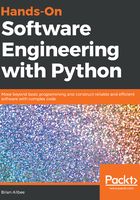
上QQ阅读APP看书,第一时间看更新
Kanban and the phases of the SDLC model
Many Agile processes, especially those that use stories as a basic unit of effort or work, have a lot of similarities. Since most story-related items have been described in some detail in discussing Scrum, any later methodologies that use stories will only note variations on the themes:
- Before development starts: Requirement analysis and definition, and system architecture and design, work in much the same way as they do in Scrum, and for many of the same reasons. The primary difference is that there is a less formal structure expected in Kanban to accomplish the attachment of requirements-and-architecture details to stories. It generally happens when there's time and/or a perceived need, such as the development team being close to running out of workable stories.
- The development process itself: Development and Quality Assurance processes are part of the flow of a given story as it's being worked to completion. So, too is system integration and testing, and acceptance pretty much has to happen during a story's life cycle, since there isn't an end-of-Sprint meeting to demonstrate development results and acquire acceptance.
With a less formal structure, fewer process rituals, and a readily-understandable just-in-time approach to its process, Kanban is easily understood, and reasonably easily managed. Some additional care at key points, and the ability to identify those key points, helps considerably in keeping things moving smoothly and well, but as long as the ability to recognize and address those key points improves over time, so too will the process.